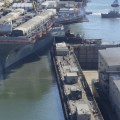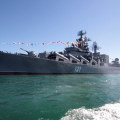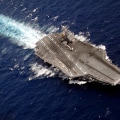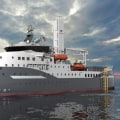The Department of Defense has reported that China currently operates six nuclear-powered ballistic missile submarines, six nuclear-powered attack submarines, and 46 diesel-powered attack submarines. It is unlikely that the Chinese will finish a nuclear-powered aircraft carrier until the end of the decade, but they will soon have three aircraft carriers in action. Reports suggest that China could have obtained nuclear plans from the United States Navy through traditional or cyber espionage, which could speed up the construction of a nuclear-powered aircraft carrier. In addition to the two aircraft carriers in operation, China already has more than a dozen nuclear-powered submarines in its arsenal.
France learned a lesson about using submarine jets for transfer to a surface ship as large as an aircraft carrier when they attempted to build their first and only nuclear-powered aircraft carrier, the Charles de Gaulle. In descending order, PLAN's surface force consists of two aircraft carriers, a cruiser, 32 destroyers, 49 frigates, 37 corvettes and 86 coastal patrol ships with missiles. The main benefit of China's fleet could be to help Beijing refine reactor technology for use in a future nuclear-powered aircraft carrier. The South China Morning Post quoted a person close to the Chinese navy as saying that shipbuilders “are interested in making significant progress with the construction of the fourth aircraft carrier.” Construction of the fourth ship resumed earlier this year after delays, as Beijing continues to flex its naval power. The United States Navy has a surface fleet consisting of 11 aircraft carriers, 92 cruisers and destroyers, and 59 small surface fighters and combat logistics ships. As for submarines, the United States maintains a fleet of 68 platforms.
In comparison, China has a fleet of surface warships consisting of 121 vessels, an underwater fleet of 56 platforms and another 341 coastal patrol ships. China is building its fourth aircraft carrier as it seeks to increase its naval power in the Asia-Pacific region, and the ship is “likely to be powered by nuclear energy,” according to sources close to the country's military. This could include a more dispersed pattern of force deployments, a greater number of anti-ship and anti-aircraft missiles, less dependence on forward-deployed aircraft carriers, and a greater dependence on unmanned systems, submarines and anti-submarine warfare capabilities. Many regional powers — especially India, Indonesia, Singapore, Taiwan, and Vietnam — maintain deepening security relations with the United States precisely because of concerns about potential threats from China. As a reference, China's only formal ally, North Korea, maintains a handful of submarines and coastal patrol ships. China is looking into working on an icebreaker with Russia which could benefit them in their pursuit of building their fourth aircraft carrier that could be powered by nuclear energy. None of their current ships are powered by nuclear energy but they are confident in their shipbuilding prowess.



